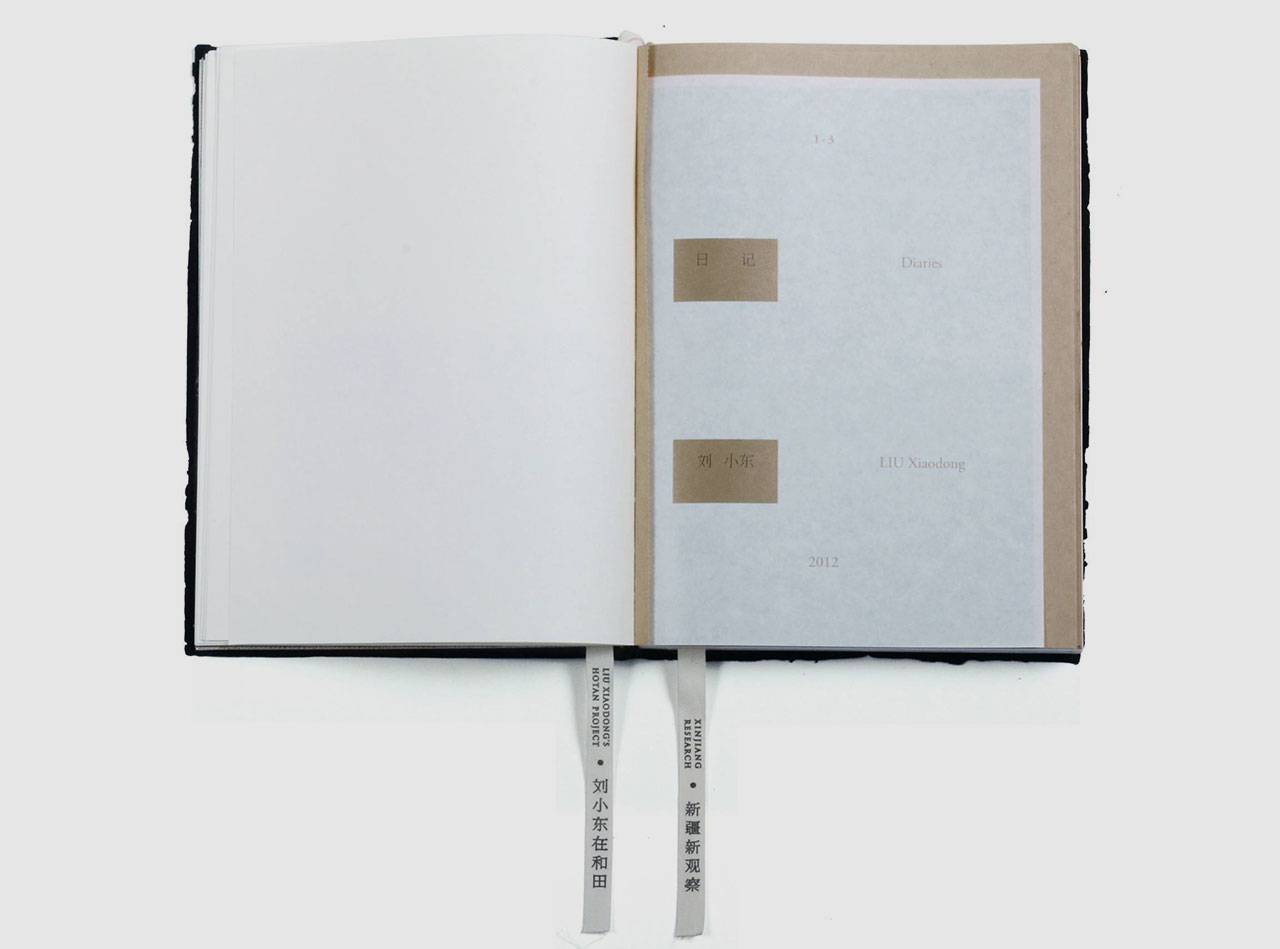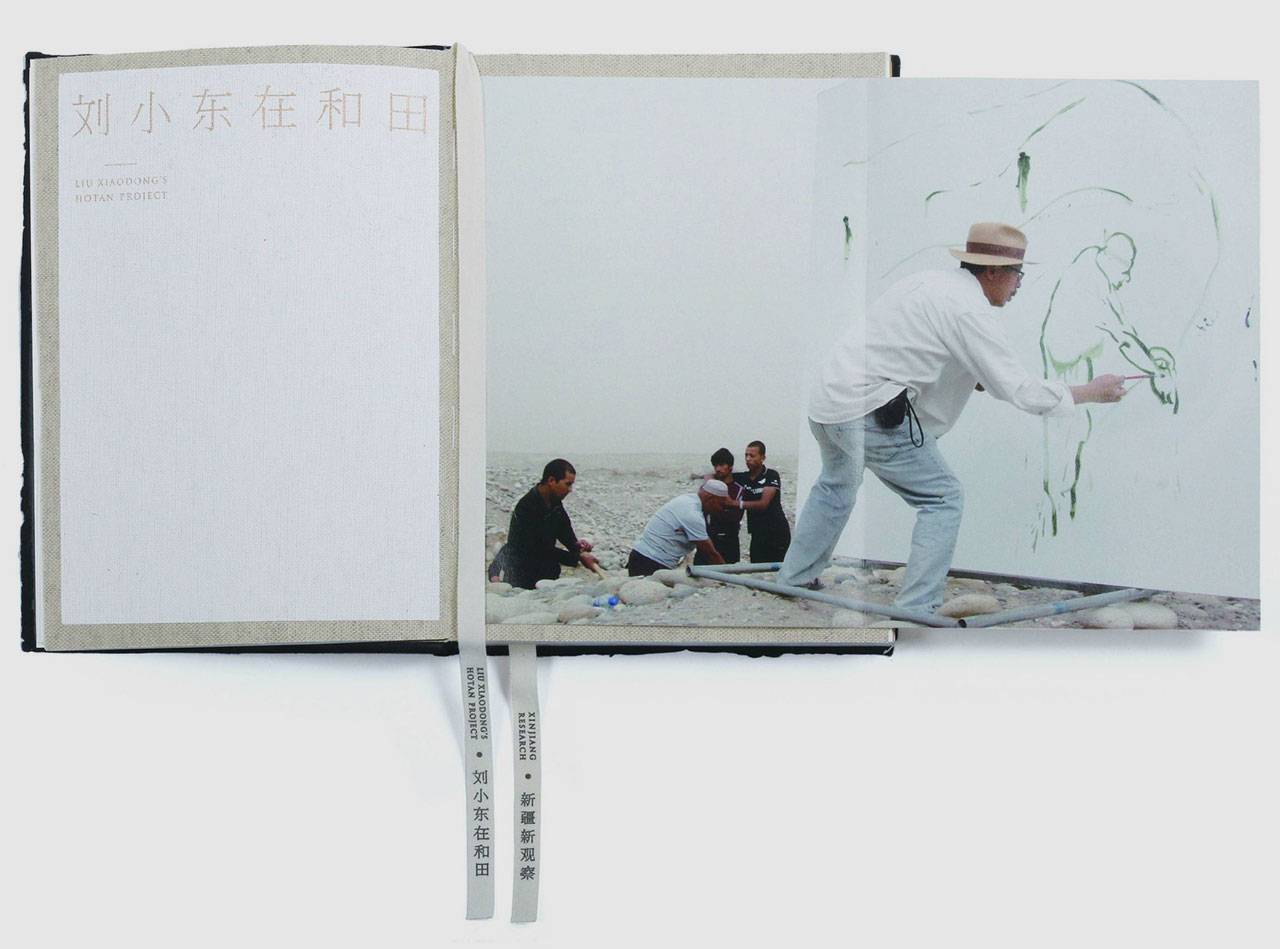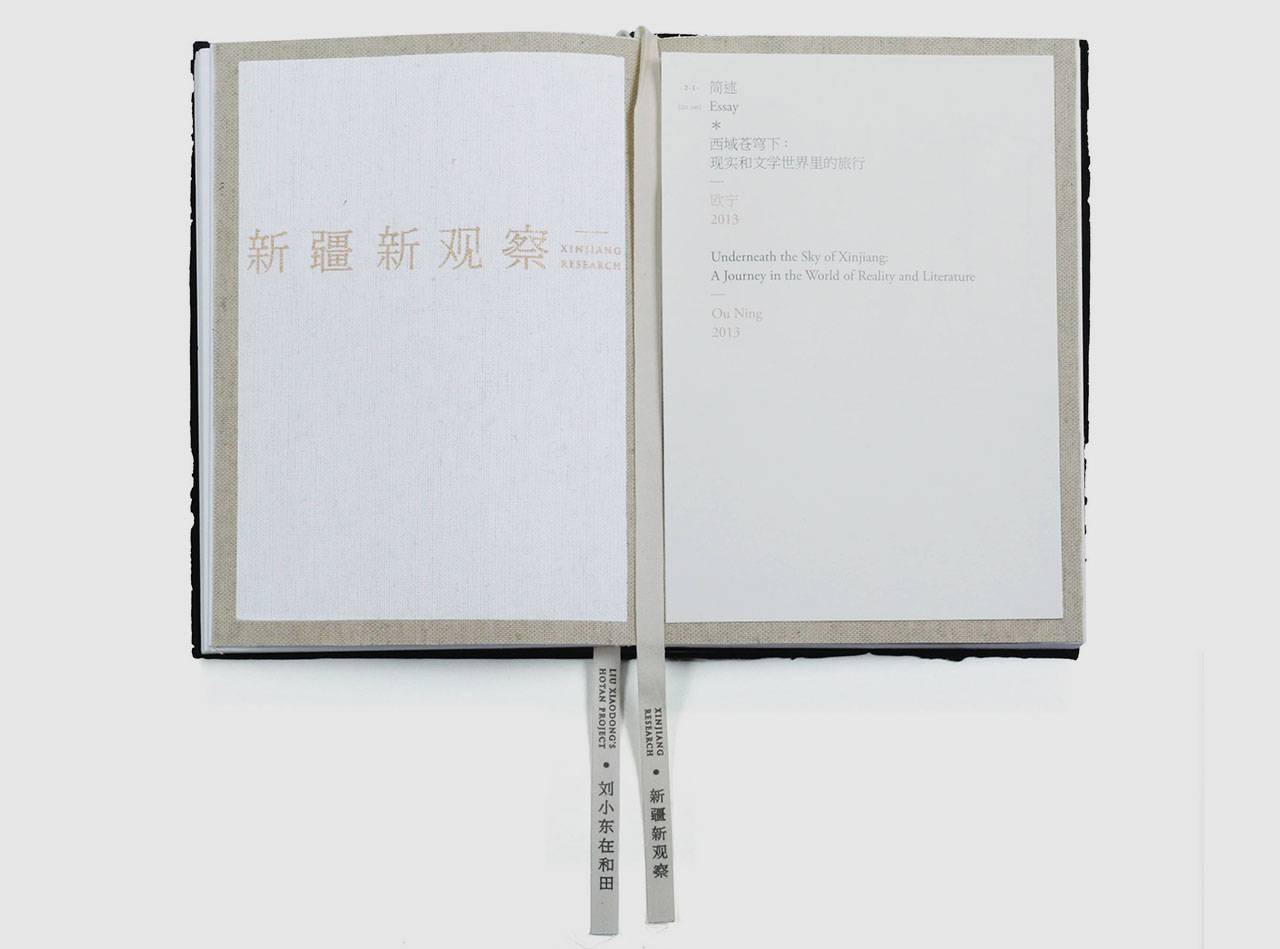


 title: Liu Xiaodong’s Hotan Project & Xinjiang Research
title: Liu Xiaodong’s Hotan Project & Xinjiang Research
year: 2013
category: book
dimensions: 170 × 230 mm
client: Today Art Museum, China CITIC Press
Sociological concepts derived from the creative process of artists, a combination of the two parallel programs.
The Tsinghua University in Beijing is without a doubt among China’s elite universities, known more as a cadre training centre than as anart school. Noted graduates include high-ranking party functionaries, engineers and scientists, and also state presidents and primeministers. However, the Faculty for Art and Design has also acquired a certain reputation; ever since it won first prize as a “national research institute for art and design”, it has been renowned as an institution of artistic education.
Thisis demonstrated by a series of illustrious projects handled by the faculty, such as a series of significant design assignments relating to the 2008 Olympic Games, and to the festivities to mark the 60th anniversary of the People’s Republic of China. Recognition of this institution’s alumni extends beyond China: in March, the creative team Xiao-Mage and Cheng Zi of ADC received several awards for apublication theydesigned for the China Architecture & Building Press. And it surely can not be easy to come to international attention in what iscurrently an especially dynamic Chinese scene, especially in graphic design and book design.
Xiao Mage and Cheng Zi, however, have succeeded in doing precisely that many times. Back in 2009, their work was included in the international exhibition Formsof Inquiry: the Architecture of Critical Graphic Designby Zak Kyes (Zak Group). In the architecture museum at Lausanne’s polytechnic university, heassembled works by contemporary graphic artists whose works are founded on individual “critical research”. Certainly not something one would expect from Chinese graphic design or bookdesign, which is supposedly in the service of the state. Since then, the studio has garnered numerous international prizes, including a bronze medal for “The Most Beautiful Books From All Over the World” at the 2014 Leipzig Book Fair.
Theywere awarded this medal for a catalogue on the “Hotan Project & Xinjian Research” by the artist Liu Xiaodong, produced by the internationally renowned Chinese curators Hou Hanru and Ou Ning. Xiaodong is known for his paintings, which he creates on location with the aim of capturing the economic development of China—and, in his more recent projects, of Egypt—in his images, with the aid of selected, prototypical figures. In his realistic paintings, which are developed from concentrated portraits and body images by Lucien Freud, the artist tries to incorporate the life circumstances of the portrait subjects into his works. The book documents the works the artist has created on the hard and dangerous work in the Xinjiangjade mines and its creation process in this autonomous province in China’s extreme north-west, incorporating contributions by local authors into the project.
Alongside diary entries, sketches, photos (with and without overpainting), and the large format paintings, the book also includes the results of public podium discussions on the artist’s project and its localreception. The judicious use of alternating matte and glossy papers, colour and monochrome, fine and coarse typography reflects the project’s various stages, from the initial design to the artwork and its documentation. The atmosphere was captured so convincingly that the jury members said they could feel the “temperature, the air, and the earth” of the location. If this is possible, the credit must surely go to the designer’s concept.
In an interview for the “yellow pages” column in IDEA magazine (IDEA No.367, 2014/11), in which the editors Tetsuya Goto and Javin Mo lookat issues of Asiatic cultural identity, Xiao Mage emphasises thatengaging with international design standards has very much turned Chinese concepts of graphic design upside down. This is placed inrelation to three generations of Chinese graphic designers: “This generation is very concerned with learning from Western and Japanese design, but we are also very interested in re-evaluating the Minguoperiod, when China, as the Republic of China, was governed by the Kuomintang. When the dynasty collapsed—we were inspired by the trial and error approach in the absorption of Western influences.” Andreas Schlaegel











